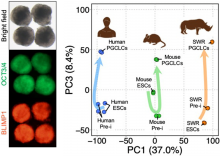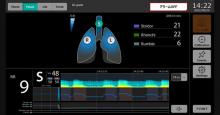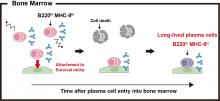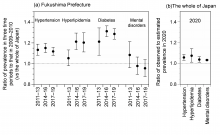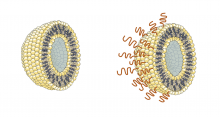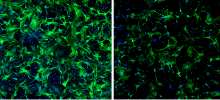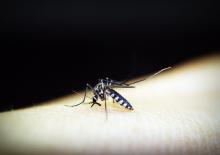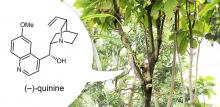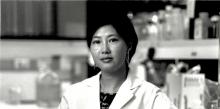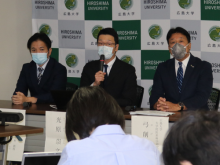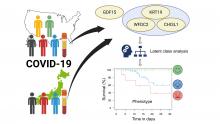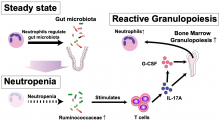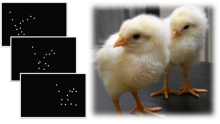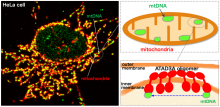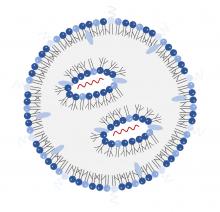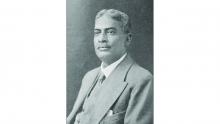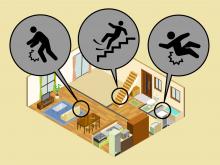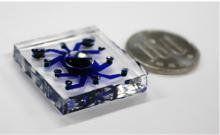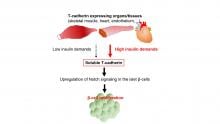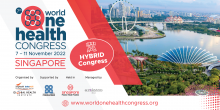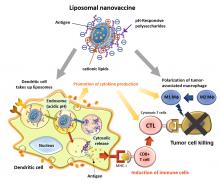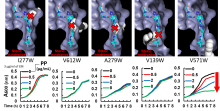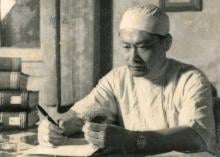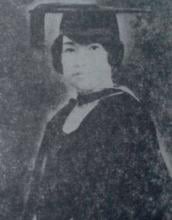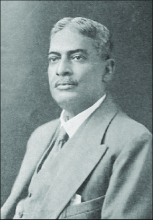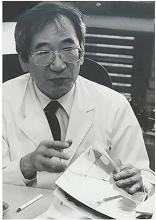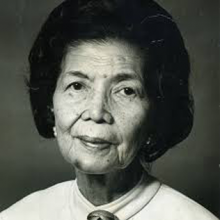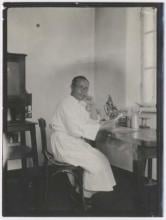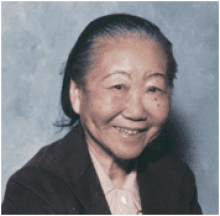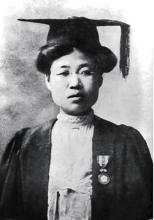Medicine
News
19 Dec 2022
Researchers from Osaka University have developed a culture system using pluripotent cells from southern and northern white rhinos, which was refined to produce primordial germ cell-like cells (PGCLCs). These cells are the equivalent of primordial germ cells, the origin of eggs and sperm. The study marks an important first step in the potential production of northern white rhino gametes, which could be used in breeding programs, and is the first to induce PGCLCs in a wild animal.
16 Dec 2022
Scientists developed a novel device that predicts whether an ICU patient taken off mechanical ventilation is likely to suffer from respiratory emergencies, helping critical care teams to provide immediate life-saving interventions.
15 Dec 2022
Researchers led by Osaka University report the development of INCIDER, a fluorescent sensor system that enables high-contrast microscopic imaging of temporal changes in cellular interactions mediated by the N-cadherin molecule. This sensor system, which emits much brighter fluorescence than the currently used system while detecting these interactions, is expected to have a wide range of applications in developmental biology, neuroscience, and other fields.
14 Dec 2022
Researchers led by Osaka University generated a time-stamping method to trace the development and survival of plasma cells in the bone marrow and spleen. Using a mouse model in which plasma cells were fluorescently labeled in an inducible manner, they found that plasma cells were continuously replenished by new cells, a small portion of which differentiated into long-lived plasma cells (LLPCs). These findings may aid in the development of new vaccines that efficiently induce LLPCs.
13 Dec 2022
A study by Osaka University has shown that the prevalence of non-communicable diseases, which included hypertension, hyperlipidemia, diabetes, and mental disorders, increased after the Fukushima disaster and the COVID-19 outbreak. These findings emphasize the importance of improving post-disaster health promotion strategies and recommendations.
09 Dec 2022
A new coating for tiny packages called liposomes could allow them to carry vaccines and drugs into and around the body more safely.
09 Dec 2022
Silencing the gene, called WWP2, in patients in the early stages of cardiomyopathy could delay progression to heart failure by controlling immune cell infiltration and activation, and halting the formation of excessive scar tissue, preclinical data suggest.
09 Dec 2022
− The European Commission Approved QDENGA (TAK-003) for Use in Individuals Four Years of Age and Older [i]
− QDENGA Becomes the Only Dengue Vaccine Approved in the EU for Use in Individuals Regardless of Previous Dengue Exposure [i]
08 Dec 2022
Quinine and various drugs based on its chemical structure have been used to treat malaria for centuries. But parasites resistant to antimalarial drugs are becoming apparent. To pave the way for future medicine development, an efficient way to synthesize quinine was needed. And now a research team from Tohoku University has achieved just that.
08 Dec 2022
Giants in History: Chinese-American virologist and molecular biologist Flossie Wong-Staal (27 August 1946 – 8 July 2020) was the first scientist to clone HIV and determine the function of its genes.
01 Dec 2022
Therapeutically superior mesenchymal stem cells derived from the cranial bone offer hope in reversing paralysis and language impairment in moderate to severe cases of stroke.
25 Nov 2022
Asia Research News monitors the latest research news in Asia. Some highlights that caught our attention this week are a new planet that orbits a dying star, a map of all the airborne microbes, and the potential to protect our organs by hibernating during surgery.
25 Nov 2022
Researchers led by Osaka University identified plasma proteins associated with critical pathogenesis in COVID-19. Using a novel blood proteomics method, the researchers evaluated two discovery cohorts and one validation cohort of patients with COVID-19 and healthy volunteers. Cell adhesion proteins WFDC2, GDF15, CHI3L1, and KRT19 were shown to be associated with disease severity in patients with COVID-19, and may serve as potential targets for therapies to treat COVID-19 infection.
22 Nov 2022
The research team investigated the role of D-amino acids in severe viral infection. Mouse models of influenza A and COVID-19 infection and patients with severe COVID-19 demonstrated reduced D-amino acid levels in the blood. Supplementation with D-alanine mitigated body weight reduction in IAV model mice and improved survival in COVID-19 model mice. D-amino acids may represent potential biomarkers and therapeutic agents for the treatment of severe viral infection.
21 Nov 2022
Intestinal bacteria composition is crucial to driving the recovery of neutrophils counts in the blood of mice following treatments such as stem cell transplants or chemotherapy.
18 Nov 2022
Exploring virtual human-agent relationships, A fly protein gives clue for human cancers, Rare earth elements formed in neutron star mergers 💥, One-stop process for hydrogen production. Read all in the November's Editor's Choice plus Upcoming event K4DM KNOWLEDGE MARKETPLACE – Bangkok 2022: Exchanging Ideas for a Democratic Myanmar.
18 Nov 2022
Disturbed transmission via nicotinic acetylcholine receptors in chick fetuses impairs the hatchlings’ preference for animate objects—similar to what is seen in autism spectrum disorder in humans.
17 Nov 2022
Researchers led by Osaka University have shown that a molecule known as ATAD3A is essential for the movement of genetic material inside cellular substructures called mitochondria. Appropriate distribution of this DNA, organized into “nucleoid” structures, is key for the generation of energy by the “respiratory chain” protein complex. This study opens up opportunities for developing new methods to alter nucleoid movement and affect mitochondrial function, thereby providing potential therapies against mitochondrial diseases.
10 Nov 2022
A novel branched lipid that has a high stability in storage and a high efficiency in the delivery of mRNA to cells has been developed.
10 Nov 2022
Giants in History: Indian scientist and physician Upendranath Brahmachari (19 December 1873–6 February 1946) is best known for creating a drug called Urea Stibamine, used to safely and reliably treat visceral leishmaniasis (or Kala-azar), a severe infection caused by the Leishmania parasite.
10 Nov 2022
Injury from falls lowers healthy life expectancy and quality of life, especially for older people. In Japan, patients discharged from acute care hospitals have higher incidences of falls. These falls occur more often indoors in places used frequently in daily life. A group of Osaka Metropolitan University researchers conducted a 6-month follow-up survey, after discharge from an acute care hospital, on falls and near-falls, of orthopedic disease patients with a fall history aged 65 or older. The results suggest that preventive intervention instructing patients using their home floor plans may help prevent falls during the early post-discharge period.
09 Nov 2022
Researchers from Osaka University and Dusseldorf University have found a new theranostic compound that effectively shrinks prostate tumor in mice. Theranostics is a cancer treatment that involves finding cancer cells anywhere in the body and delivering targeted radiation to kill those cells, by drugs that contain radioactive isotopes. It means that this compound could be a promising option for treating hormone-resistant metastases in patients with recurrent cancers. This is stated to be tested in an upcoming clinical trial.
08 Nov 2022
The costliness of drug development and the limitations of studying physiological processes in the lab are two separate scientific issues that may share the same solution. Microphysical systems (MPSs) are in vitro platforms made up of cells in a microenvironment that closely mimics that found in the body, allowing scientists to recreate the conditions of tissues found within the body for both further elucidation of biological conditions and systems and for applications such as testing drugs in a more precise model than animal testing allows. However, the advancements that MPSs could provide have been limited up to this point by an inability to accurately record what is happening at a cellular level. Now, a team of scientists has developed an electrochemical sensing platform that could solve this issue. The results were published in Biosensors and Bioelectronics.
07 Nov 2022
Researchers led by Osaka University show that a molecule called T-cadherin can be secreted in a soluble form. Soluble T-cadherin interacts with pancreatic insulin-producing β cells via the Notch signaling pathway to promote their proliferation and increase the production of insulin. Recombinant T-cadherin stimulated Notch signaling in isolated mouse pancreatic islets, which contain β cells, indicating that T-cadherin may have therapeutic potential for diabetes.
07 Nov 2022
Focusing on the imperative of integrating science, policy and clinical practice to advance global One Health movement especially in the aftermath of COVID-19, the Congress will feature sharing by leading global scientists and policymakers on ways to address complex global health challenges.
01 Nov 2022
Triple-negative breast cancer (TNBC) tumors gain immunosuppression and chemoresistance through interactions between interleukin 34 and myeloid-derived suppressor cells, researchers find.
31 Oct 2022
While both protect from severe disease, inactivated SARS-CoV-2 and spike mRNA vaccines trigger different T-cell responses.
31 Oct 2022
Call To Action urges G20 member countries and partners to mobilize adequate resources to close the TB funding gap and save lives.
31 Oct 2022
A research group at Osaka Metropolitan University has developed a drug delivery system that activates a strong cellular immune response to attack cancer cells, using one-tenth of the amount of antigen needed in the group’s previous work. By incorporating positively charged cationic lipids into liposomes and adding negatively charged pH-responsive polysaccharides to the surface, the research group increased the uptake efficiency of liposomes encapsulating cancer antigens by dendritic cells by approximately five times, which increased cytokine production by about 100 times. This increased M1-type macrophages, which activate cancer immunity, and decreased M2-type macrophages, which promote cancer growth.
31 Oct 2022
Researchers from Osaka University used a combination of genetic manipulation and protein structural analysis to determine how the position of “bulky” amino acids influences the ability of efflux pump inhibitors to bind bacterial pump proteins and so reduce their resistance to antibiotics. This work has implications for our understanding of bacterial antibiotic resistance, and may be useful in the rational design of drugs that target bacteria that have evolved antibiotic resistance.
Events
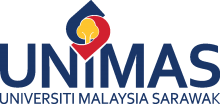
25 Jun 2008
Kuching, Sarawak, Malaysia - The conference aims to promote the use of evidence in nursing to ensure quality care is delivered to the clients in an increasingly complex and challenging health care environment.

23 Apr 2008
The first scientific conference of Al Kadhimiyia Teaching Hospital (University Hospital in Al Kadhimiyia will be held in the hospital under the patronage of the Iraqi Minister of Health Dr Salih Al Hasnawi.

09 Sep 2008
Shanghai, China - MEDTEC China is a premier opportunity to source everything needed to design and produce the full spectrum of advanced medical devices.

02 Jul 2008
Tokyo, Japan - International trade fair specialized in API, where all pharmaceutical ingredient suppliers exhibit.

02 Jul 2008
Tokyo, Japan - Pharma Pack allows you to Meet top industry professionals and expose your technologies/ products/services to the Japanese pharmaceutical industry.

03 Apr 2008
Hong Kong - Polyphenols are a kind of chemical that may protect against some common health problems and possibly certain effects of aging. This symposium summarises current knowledge, and indicate the path for new major discoveries.

30 Apr 2008
Darwin, Australia - Plenary sessions will showcase leaders in Paediatrics and Child Health Care. These speakers will focus on the critical issues in the specialty areas.

19 May 2008
Antalya, Turkey - The program will include presentations by leading basic, clinical, and epidemiologic scientists on the latest discoveries in their areas.

04 Apr 2008
KL, Malaysia - The event brings you the best in professional development offerings, opportunities to network with and learn from peers in the field.

02 Nov 2008
The most definitive antibody event in Europe will be coming to Asia in 2008. Asia Antibody Congress 2008 will bring together thought leaders from pharmaceutical, biotech & start-up companies, CRO/CMOs, consultants & regulatory authorities.

14 Apr 2008
BioMedical Asia 2008, taking place 14 - 17 April 2008 in Singapore, is the largest and most comprehensive biomedical event in Asia Pacific where top minds from every continent will convene.

30 Apr 2008
Darwin, Australia - Paediatric and Child Health Nurses face many barriers in their practice; geographical, cultural, and professional to name a few. This conference aims to show that barriers can and must be crossed to improve health outcomes for children and young people.

31 Mar 2008
Bangkok, Thailand - This event brings together key authoritative figures, high-profile industry players, and experts from both local and regional markets to address the regulatory policies, latest developments, industry challenges & new investment opportunities in the Thai pharmaceutical industry.

26 Mar 2008
This seminar attempts to dissect the various opportunities and potential that are offered by bioscience and biobusiness, the concerns and challenges, market, the different disciplines of biobusiness from the ‘low-end’ to the ‘high-end’ applications, and also the incentive and support available for biotech entreprenuers.

25 Mar 2008
Prof. Choudhary will present on the recent developments in the biotechnology and chemistry of the medicinal plants along with the presentation of some of the results of research work carried out at Dr. Panjwani Center for Molecular Medicine and Drug Research, University of Karachi, Pakistan.

25 Mar 2008
We believe this will be an exceptional opportunity for you to learn about the application of next generation sequencing technologies for analysis of the leukaemia genome.

11 Apr 2008
Bangladesh - The event will feature the World’s spectrum of latest machinery, equipment & technology required by the Pharmaceutical Industry of Bangladesh, which is rapidly growing and with its fast pace looking beyond the borders of Bangladesh, is all set to become the emerging largest sector earning foreign exchange for the country.

11 Apr 2008
Bangladesh - This event is very important for Bangladesh for the Healthcare Industry as it offers an Industry specific showcase of Hospital, Pharmaceutical & Medical Equipment, Healthcare products, solutions and services from leading companies from across the globe.

03 Mar 2008
Singapore - This event will discuss, among others, the on-going pressing concerns faced in clinical trials operations, addressing the risks, timeline and budget constraint, whilst effectively tackling key challenges in overcoming trials agreement and site contract negotiation hurdles.

18 Mar 2008
Bangalore, India - This event will include Pharma Development and Case Studies, Modelling, SAR and
Synthesis, Target Identification, Lead Optimisation & Business Partnering. There will also be a pre-conference course on Microwave-Assisted Organic Synthesis.

07 Mar 2008
Tokyo, Japan - This event touches on Translational Medicine/Technologies, Scientific Advances & R&D Strategies, Finding Partners and Collaborators.

25 Mar 2008
Singapore - This event will gather healthcare professionals from across Asia and internationally to share updates and key business opportunities of each popular medical destination country.

26 Feb 2008
This conference will serve to launch JCOR (the Japanese Centre for Ontological Research), which has recently been funded by the Japanese Government's Ministry of Education and Science (MEXT) under the framework of the Open Research Centre on Logic and Formal Ontology.

06 May 2008
Melbourne, Australia - The theme of the event is Diet-Gene Interaction in Human Health and Disease. It includes a thorough overview of current science in the area, presented by leading international experts in the field.

26 Mar 2008
Perth, Australia - This world congress represents the first time that all health professions across all sectors, have been invited to meet. It is an opportunity to meet those in the forefront of developments in health, to hear experts share their vision of our future and to network with leaders in health from across the world.

10 Jan 2008
Generating Synergies with Molecular Science - The Institute of Bioengineering and Nanotechnology is delighted to host the 2nd Molecular Frontiers Symposium in Singapore, in collaboration with the Molecular Frontiers Foundation.

02 Jun 2008
Singapore - Part of the worldwide Interphex family of events, INTERPHEX Asia is dedicated to the pharmaceutical manufacturing industry in Asia, bringing together international suppliers and pharmaceutical manufacturing professionals in the Asia Pacific region.

16 Jan 2008
Singapore - The 2nd International Conference of the Asia Pacific Society for Healthcare Quality will draw attendance from leading healthcare professionals from the region as well as international experts in healthcare quality.

05 Dec 2007
Auckland, New Zealand - The aim of this conference is to examine the concept of idyllic lifestyle: what is meant by an idyllic lifestyle, do we have an idyllic lifestyle, what are the advantages and disadvantages of it?

25 Nov 2007
Mumbai, India - India is predicted to be one of the world’s top five economies by 2025. The Indian pharmaceutical industry is a major part of this development with a growing global footprint and specialisation in all key parts of the clinical pipeline.
Researchers
Sorry, no researchers coming up for this topic.
- « first
- ‹ previous
- 1
- 2
- 3
- 4
Giants in history
Vietnamese surgeon Tôn Thất Tùng (10 May 1912 – 7 May 1982) developed a pioneering technique that reduced the risks and mortality rate of liver operations.
Michiaki Takahashi (17 February 1928 – 16 December 2013) was a Japanese virologist who developed the first chickenpox vaccine.
Irene Ayako Uchida’s (8 April 1917 – 30 July 2013) strides to understand genetic diseases such as Down syndrome paved the way for early screening of chromosomal abnormalities in foetuses.
Baron Kitasato Shibasaburo (29 January 1856 – 13 June 1931) was a Japanese physician and bacteriologist whose work led to a new understanding of preventing and treating tetanus, diphtheria and anthrax.
Maggie Lim (5 January 1913 – November 1995) was a Singaporean physician who promoted family planning and expanded the access to clinics to improve the quality of life for mothers and children in Singapore’s early days.
By isolating soil microorganisms and studying the compounds they produce, Satoshi Omura (born 1935) discovered almost 500 organic compounds with unique properties that were produced by these microorganisms, including many new antibiotics.
The founder of the Adyar Cancer Institute in India, Muthulakshmi Reddy (30 July 1886 – 22 July 1968), fought to uplift women and girls from impoverished situations.
Chinese-American virologist and molecular biologist Flossie Wong-Staal (27 August 1946 – 8 July 2020) was the first scientist to clone HIV and determine the function of its genes.
Maharani Chakravorty (1937 – 2015) was one of India’s earliest molecular biologists whose research paved the way for advances in the treatment of bacterial and viral infections.
Archana Sharma (16 February 1932 - 14 January 2008) conducted research into plant and human genetics that expanded the understanding of both botany and human health. In relation to botany, she uncovered the means by which asexually-reproducing plants evolve into new species.
The first Thai woman to receive a degree in medicine, Margaret Lin Xavier (29 May 1898 – 6 December 1932), is best remembered for her compassion towards her less privileged patients.
In 1915, pathologist Katsusaburo Yamagiwa and his research assistant Koichi Ichikawa became the first to prove that chronic exposure to chemicals can cause cancer.
In 1915, Koichi Ichikawa along with pathologist Katsusaburo Yamagiwa became the first to prove that chronic exposure to chemicals can cause cancer.
Husband and wife team, Kimishige (3 December 1925 – 6 July 2018) and Teruko Ishizaka (28 September 1926 – 4 June 2019) discovered the antibody class Immunoglobulin E (IgE) that triggers allergic reactions. They also discovered that IgE antibodies attach to white blood cells, known as mast cells, releasing histamine, which causes allergic reactions.
Husband and wife team, Kimishige (3 December 1925 – 6 July 2018) and Teruko Ishizaka (28 September 1926 – 4 June 2019) discovered the antibody class Immunoglobulin E (IgE) that triggers allergic reactions. They also discovered that IgE antibodies attach to white blood cells, known as mast cells, releasing histamine, which causes allergic reactions.
Japanese chemist Takamine Jokichi (3 November 1854 – 22 July 1922) founded the Tokyo Artificial Fertilizer Company, where he isolated a starch-digesting enzyme (named takadiastase) from the fungus Aspergillus oryzae.
Ground-breaking cancer researcher Kamal Jayasing Ranadive (8 November 1917 – 11 April 2001) advanced the understanding of the causes of leukaemia, breast cancer and oesophageal cancer through the use of animal models. She was also among the first to recognise how susceptibility to cancer is linked to tumour-causing interactions between hormones and viruses.
The research of Filipino pharmaceutical chemist Luz Oliveros-Belardo (3 November 1906 – 12 December 1999) focussed on essential oils and other chemicals derived from native Philippine plants.
Thai physician and conservationist Boonsong Lekagul (1907 – 1992) made major contributions to the preservation of his country’s wildlife.
Indian scientist and physician Upendranath Brahmachari (19 December 1873–6 February 1946) is best known for creating a drug called Urea Stibamine, used to safely and reliably treat visceral leishmaniasis (or Kala-azar), a severe infection caused by the Leishmania parasite.
Filipino chemist and pharmacist Manuel A. Zamora (29 March 1870 – 9 July 1929) is best remembered for his discovery of the tiki-tiki formula to combat beriberi, a disease caused by Vitamin B1 deficiency.
Korean parasitologist Seung-Yull Cho (16 November 1943 – 27 January 2019) is remembered largely for his pioneering works to control infections caused by helminthic parasites and his contribution to journal publishing.
Fe Villanueva del Mundo (27 November 1911 – 6 August 2011) was a Filipina paediatrician who founded the Philippines’ first paediatric hospital.
After witnessing death and suffering as a youth in his home village during World War II, Nguyễn Tài Thu (6 April 1931 – 14 February 2021) set his sights on alleviating pain by becoming a doctor. After studying Traditional Chinese Medicine in China in the 1950s, Thu returned to Vietnam to serve in military hospitals. Eventually, he became the country’s foremost practitioner of acupuncture, a technique he first learned by inserting needles into himself.
Minoru Shirota (April 23, 1899 – March 10, 1982) was a Japanese microbiologist who invented the popular fermented drink Yakult.
Wu Lien-teh (10 March 1879 – 21 January 1960) was a Malaysian-born doctor who invented a mask that effectively suppressed disease transmission. Winning the prestigious Queen’s Scholarship enabled Wu to become the first Chinese student to study medicine at the University of Cambridge.
David T. Wong (born 1936) is a Hong Kong-born American neuroscientist who is best known for discovering the antidepressant drug fluoxetine, better known as Prozac.
Indian organic chemist Asima Chatterjee (1917 to 2006) studied the medicinal properties of plant products, especially compounds known as vinca alkaloids.
Chika Kuroda (24 March 1884 – 8 November 1968) was a Japanese chemist whose research focussed on the structures of natural pigments.
Umetaro Suzuki (7 April 1874 – 20 September 1943) was a Japanese scientist best remembered for his research on beriberi, a disease caused by vitamin B1 deficiency, characterized by limb stiffness, paralysis and pain.
Salimuzzaman Siddiqui (19 October 1897 – 14 April 1994) was an artist and chemist from Pakistan whose research focused on natural products from plants.
Barry Paw (29 August 1962 – 28 December 2017) was a biologist and oncologist who discovered several novel genes and their functions in red blood cells.
Syed Qasim Mehdi (13 February 1941 – 28 September 2016) was a Pakistani molecular biologist who was a founding member of the Human Genome Diversity Project (HGDP), which assessed human diversity by studying human migration, mutation rates, relationships between different populations, genes involved in height and selective pressure.
Tsai-Fan Yu (1911 – 2 March 2007) was a Chinese-American physician and researcher who was the first female full professor at Mount Sinai School of Medicine. She discovered that gout, a condition characterized by the painful inflammation of joints, was caused by elevated levels of uric acid in the bloodstream.
Min Chueh Chang (10 October 1908 – 5 June 1991) was a Chinese-American biologist who studied fertilization in mammalian reproduction.
A Japanese surgeon, Tetsuzo Akutsu (20 August 1922 – 9 August 2007) built the first artificial heart capable of keeping an animal alive.
Ogino Ginko (3 March 1851 – 23 June 1913) was the first registered female doctor to practise modern medicine in Japan.
Esther Park (1877-1910), born Kim Jeom-dong, was the first female Korean physician to practise modern medicine in Korea and trained the first generation of Korean female doctors.


